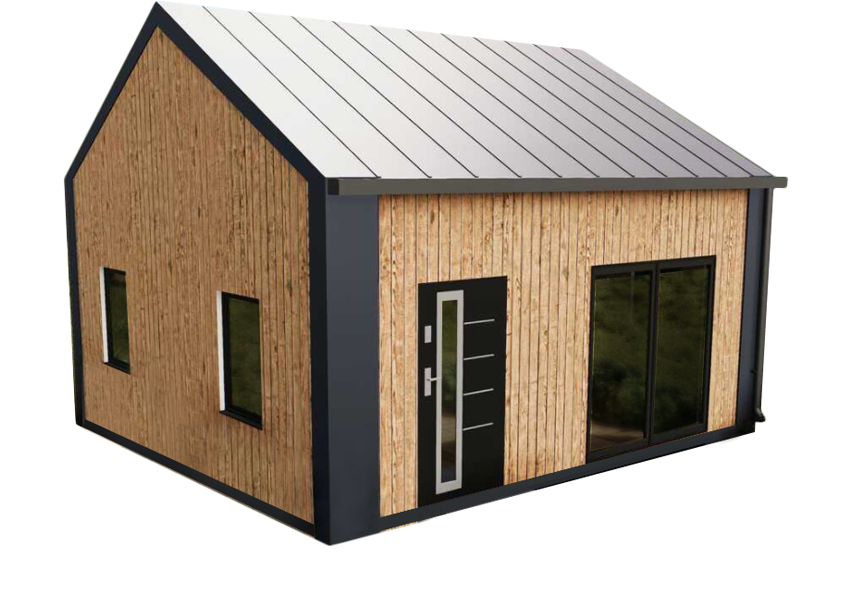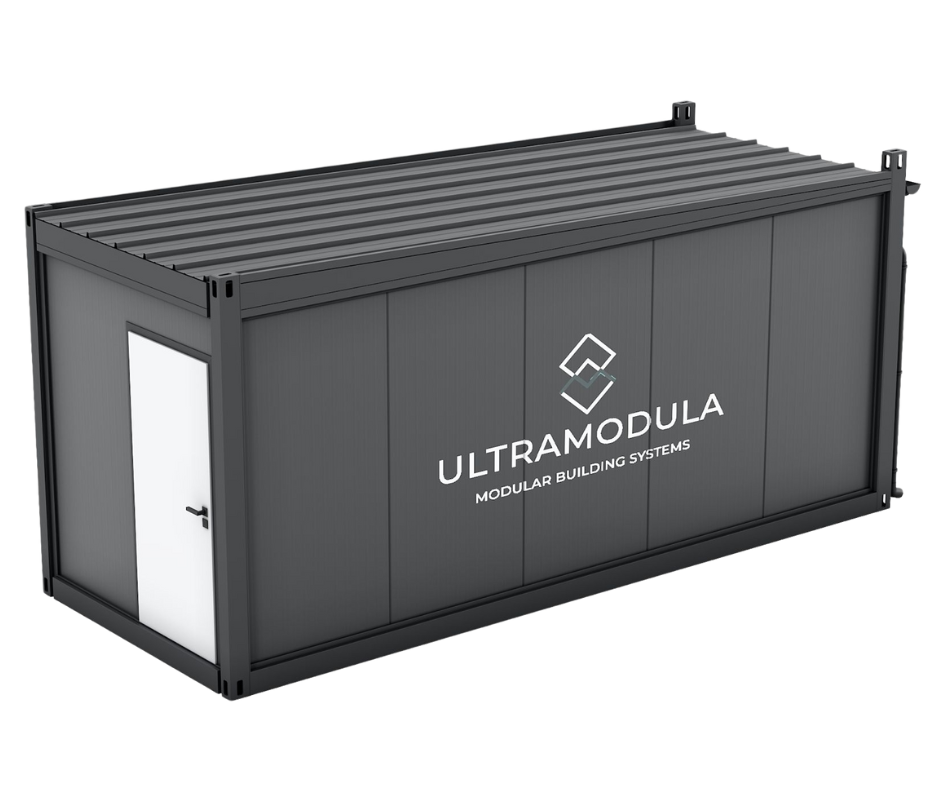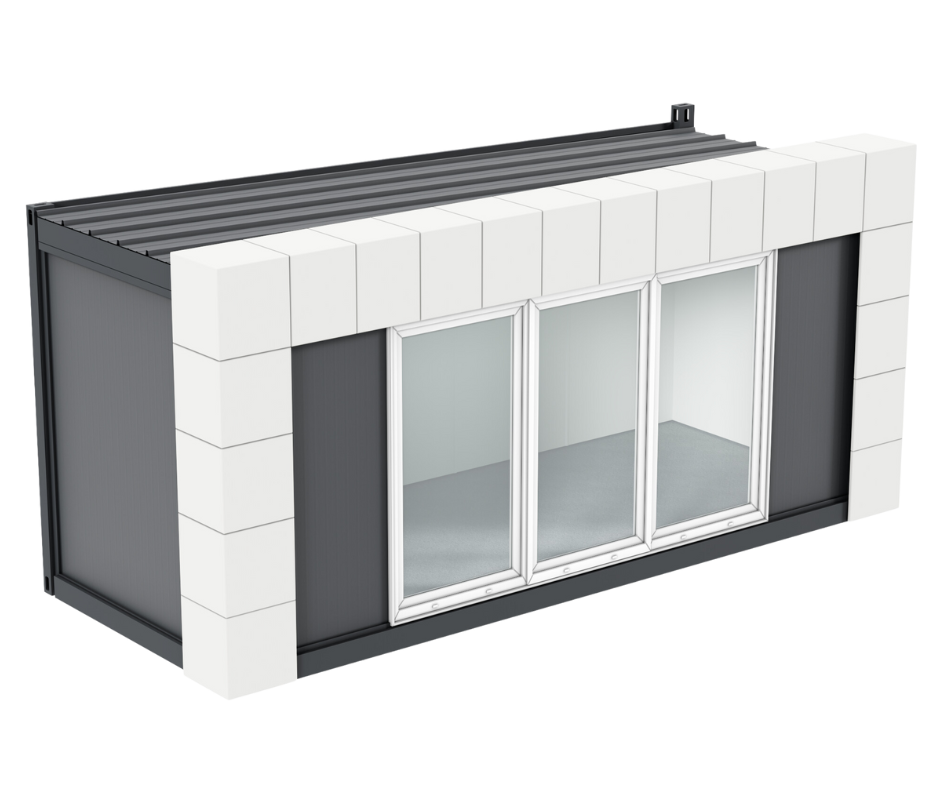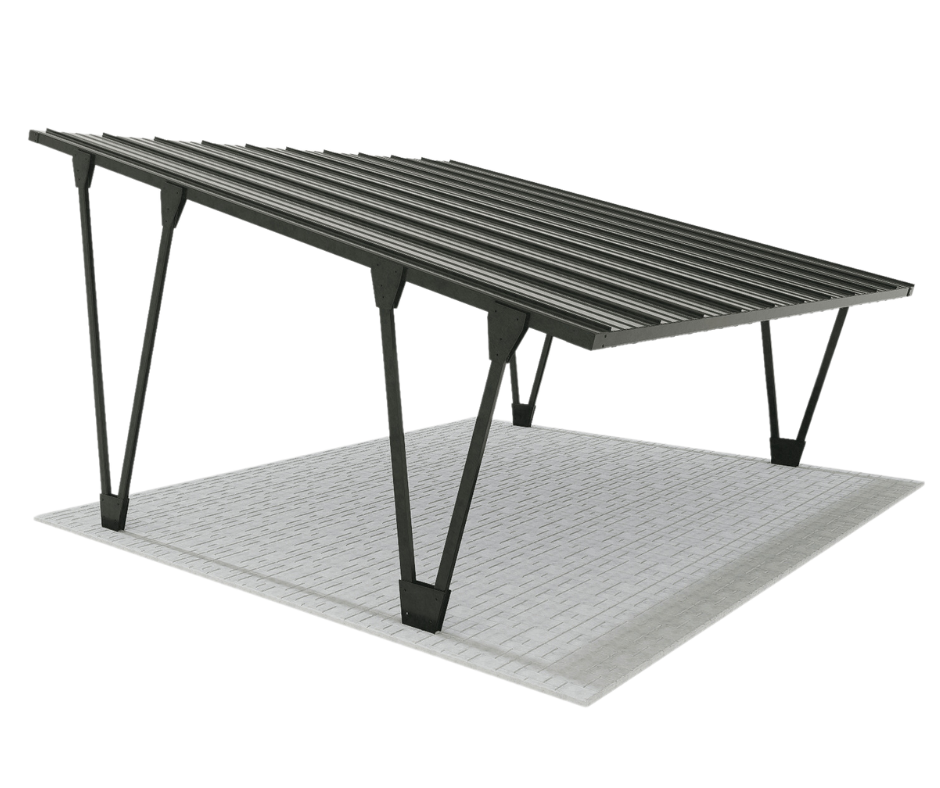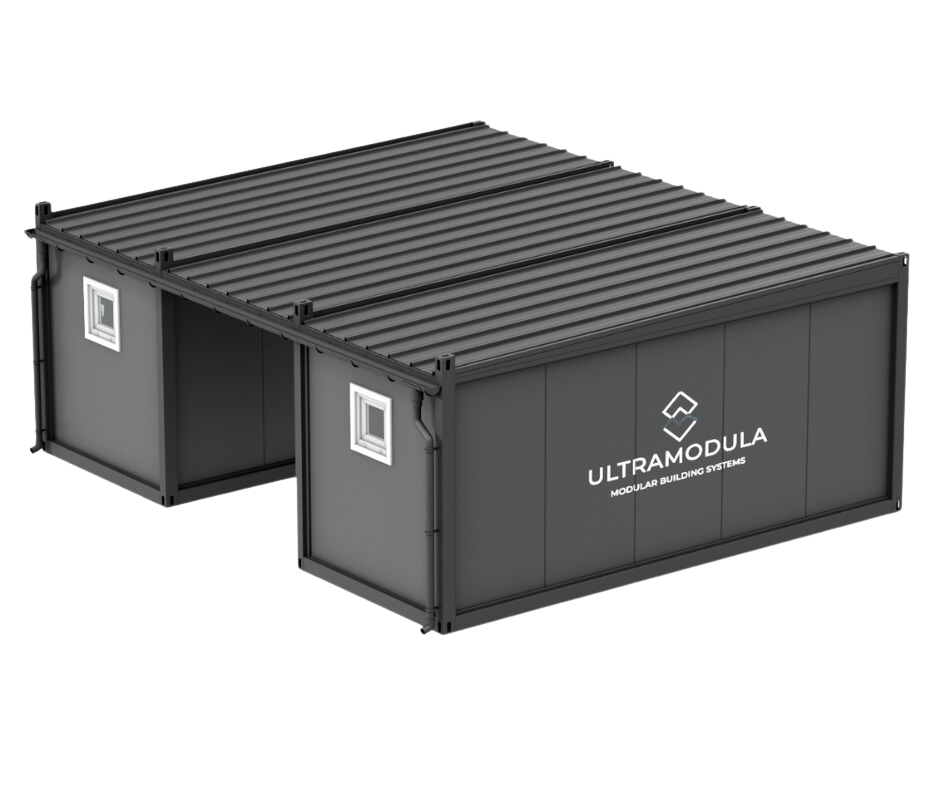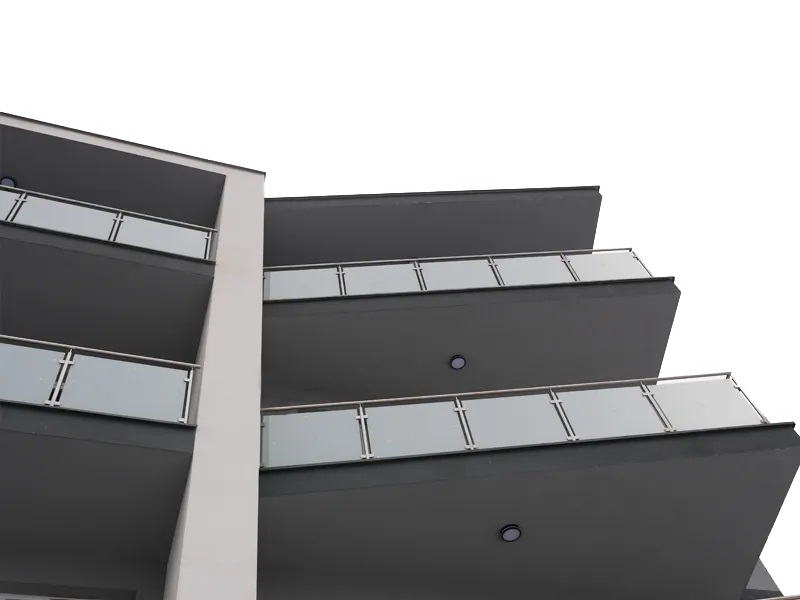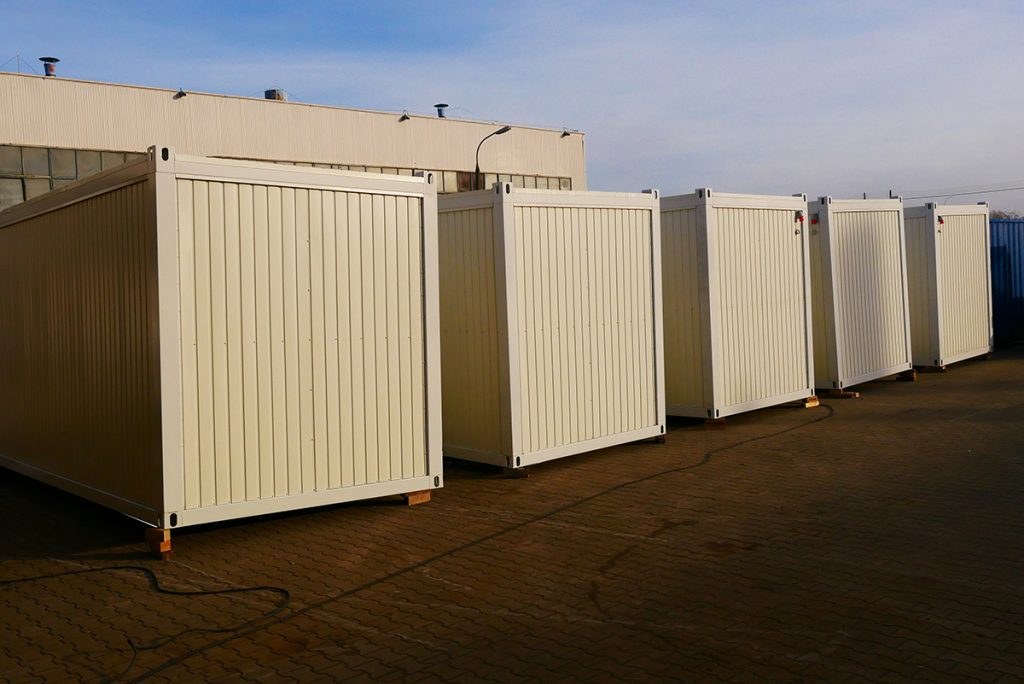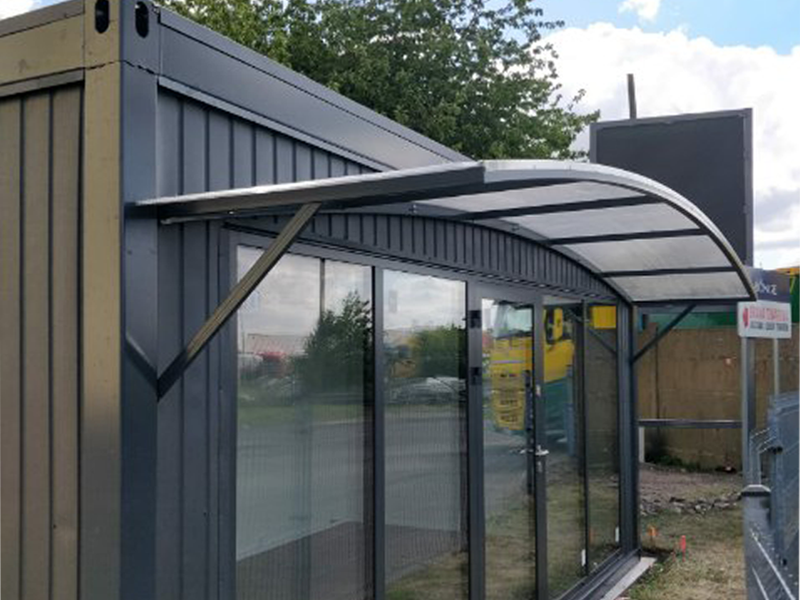When, in the early 18th century, the New York-based Bowling Green Lift-Van Company produced the first 8' x 8' x XNUMX-foot metal crates, it could not have guessed that it was starting a revolution in the global transport of goods. He completed the work
entrepreneur Malcolm McLean, who designed the first standard one in the 50s container. Probably he did not dream that the "box" he created would be used in so many areas of life and economy.
The maritime transport revolution
Malcolm McLean's project and his first container ship Ideal X forever changed the face of maritime transport. The freight container he created remains the standard until today. At first, its length was 33 feet (later it was increased to 35 feet), and its width and height were 8 feet. The biggest advantage of the American's idea was standardization, which translated into a significant reduction in the cost of transporting goods. And although now the dimensions containers have been unified to 20 and 40 ft (feet), the key principle is maintained - "boxes" must be standardized.
One container, thousands of goods
The dimensions of the containers are uniform, the construction is similar, but thanks to the introduction of different types, they can be used to transport virtually any goods. This makes container transport completely unrivaled - as much as ⅔ of sea transport in the world is containerized cargo.
General purpose containers…
And so, general-purpose containers are well suited for the so-called. and at the same time they are the most universal. The most popular in this category are containers with doors located on one of the front walls, a floor made of container plywood, as well as vents that allow natural ventilation.
Another type are dry bulk containers with a structure that is more resistant to loads arising during filling, transport and emptying. They are additionally equipped with filling and emptying openings, making them ideal for the transport of solids in bulk without packaging.
… and also for special purposes
Isothermal containers are an essential element of food supply chains, as well as other goods sensitive to temperature changes, such as medicines. They owe their insulating properties to polyurethane walls, they can be cooled using a refrigeration unit. Another popular type sea containers are tank structures. They are used to transport liquids or gases, and are built in a simple way: in a frame with standard dimensions container tank is placed. This solution also enables the transport of dangerous, explosive, flammable or poisonous cargo.
One should not forget about an important variant of containers intended for packing loads that cannot be placed in a standard one container, e.g. due to their dimensions. These are containers with an opening roof. There are two types of them: hard topwhere the folding roof is made of steel or the version without the roof only with a tarpaulin (secured for transport with a customs rope).
Non-transportable shipping containers
When containers became the standard in transport, their "career" began in other areas. Today, they are an inseparable element of the landscape of squares construction, urban space or sports facilities. Their durable, yet simple and universal design means that they can be used in many, sometimes surprising, areas. The most popular uses of containers include:
- storage,
- residential,
- office,
- commercial,
- gastronomic,
- sanitary,
- medical,
- military.
First: the warehouse
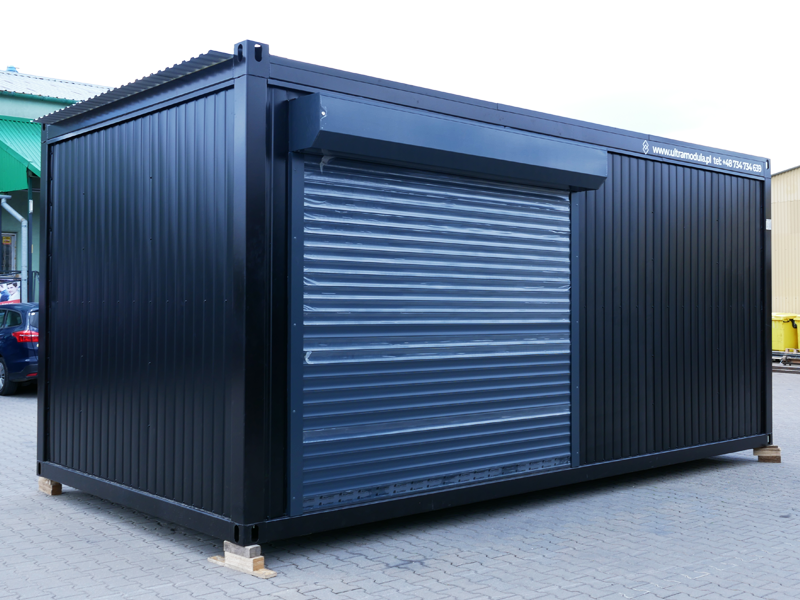
Storage container Ultramodule.
The natural path of expanding the use of containers was, after transport, storage space inherent in the transport and delivery of goods to recipients. Containers are great for storage for several reasons. To begin with, it is worth mentioning the costs. Buying a storage container is not a high price, especially when compared to building your own building. Importantly, the cost of maintaining the container after purchase is very low. Usually, it is not necessary to heat it (unless it is exceptionally required by the goods stored in it) or to hire a person to look after it. Another advantage is the speed and ease of assembly, as well as the ability to efficiently move to another place when the need arises.
Or maybe a home or office in a container?
Office containers they are a great first choice office growing company. The cost of erecting them is low, moreover, if several conditions are met, it can be done without a building permit, i.e. without unnecessary and complicated formalities. Objects of various sizes are available in the market, starting with options mini with a usable area of only 6m2, Of container office can be easily expanded. Thanks to the modular structure of the containers, adding new objects to the existing structure is really easy. It is a convenient and optimal solution, because it gives you the opportunity to increase the usable area at any time. And without moving or costly renovation. Interestingly, such an office can be expanded not only "in width", but also upwards. The construction of good quality containers allows them to be stacked.
Container residential construction, in turn, is the answer to many problems of the modern world. It can be an effective way to solve the problem of housing victims of natural disasters, such as earthquakes or hurricanes. It can also become a support for overpopulated regions of the world. But it also gives you the ability to build houses temporary, for example for events such as the Olympic Games.
Contemporary architecture also uses sea containers to build housing estates in modern global metropolises as a form of care for the natural environment. The formula of such buildings is based on the reuse of containers used for sea transport, thanks to which it clearly follows ecological trends,
It is worth noting that container construction also has its luxurious side. An example are Quick Houses Adam Kalkin (the cost of one is about 200 thousand dollars) or sun designed by Sebastián Irarrázaval from Chile with an area of 350 m2.
Commercial and gastronomic pavilions
Availability, modularity and low cost all make containers an ideal solution for trade. Creating with them pavilions is simple and fast, and besides, it allows you to move your business to a new place, i.e. follow your customers. Everyone commercial container it can be equipped with an electrical installation and is easy to modernize, and also looks very modern.
Box building containers gives a wide range of possibilities not only for highly economical projects as mentioned above pavilions commercial, but also avant-garde and designer ones, such as unusual cafes or restaurants. A great type of container that can be used in this way is the so-called open side i.e. the version with an open side wall. It allows for a very open arrangement, perfectly fitting, for example, into the increasingly popular foodtruck zones.
Sanitary, medical and military containers
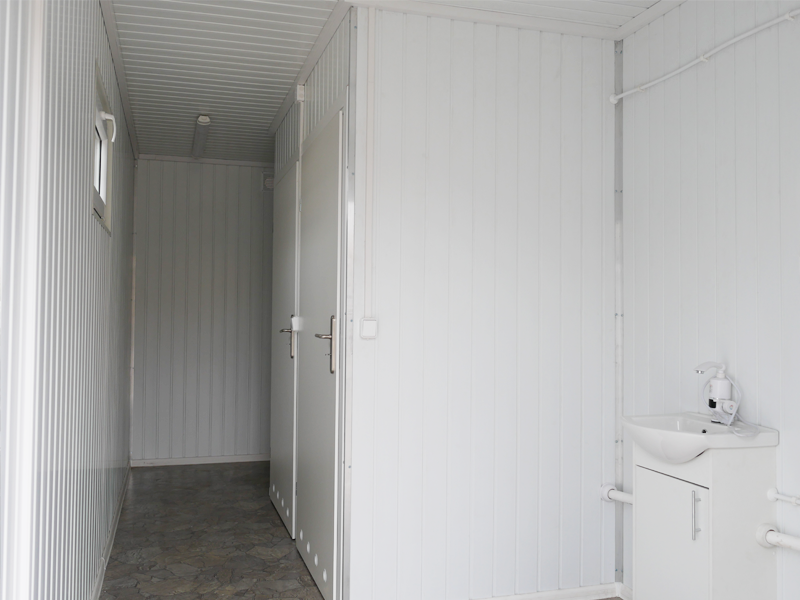
Sanitary container inside.
They are a solution that is often used, for example on construction sites sanitary containerswhere toilets, sinks and showers can be installed. This option is also great for urban swimming pools or open swimming pool complexes.
Medical containers are a more complex issue, but it is an excellent proof of how versatile containers are. Their use in the medical sector can be very basic, e.g. as first aid points during festivals or other mass events, but they can also have the most important function: saving lives if containers are used to build a hospital in a natural disaster area. Medical containers have also been used extensively during the Covid-19 pandemic. Both intended for mobile testing or later vaccination points, as well as hospitals in regions where the scale of the disease exceeded the capacity of local health centers.
Containers are also used by the military, using them to build residential infrastructure for soldiers, warehouses and field hospitals. Their mobility and universality of transport make them an excellent base for the army, which must be quickly relocated in the event of a crisis.
Infinite ideas for containers
The list of ideas for using containers is long, but it is certainly not closed. The simplicity of the design and the wide range of modifications are waiting for new, surprising patents for their use. The only limit is human imagination, and this, as we know, has no limits.

